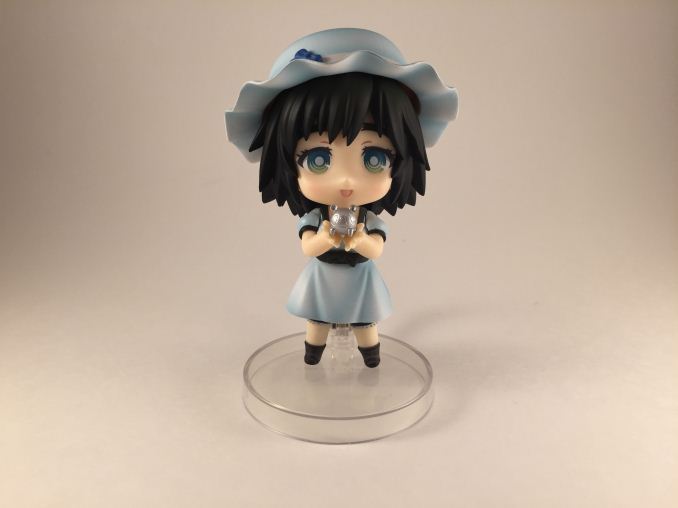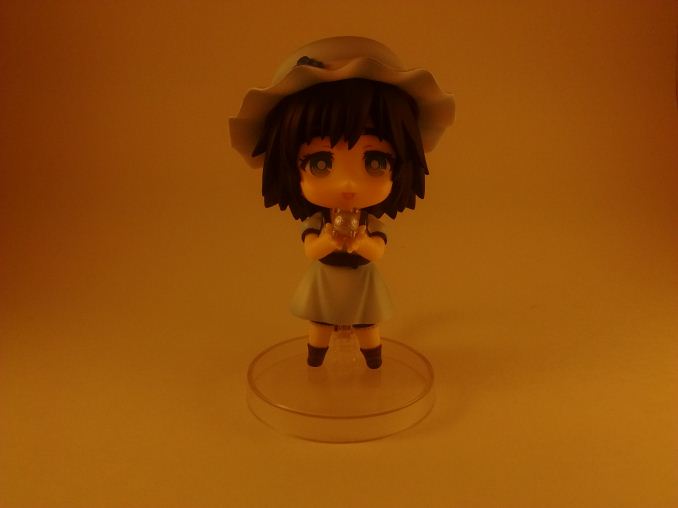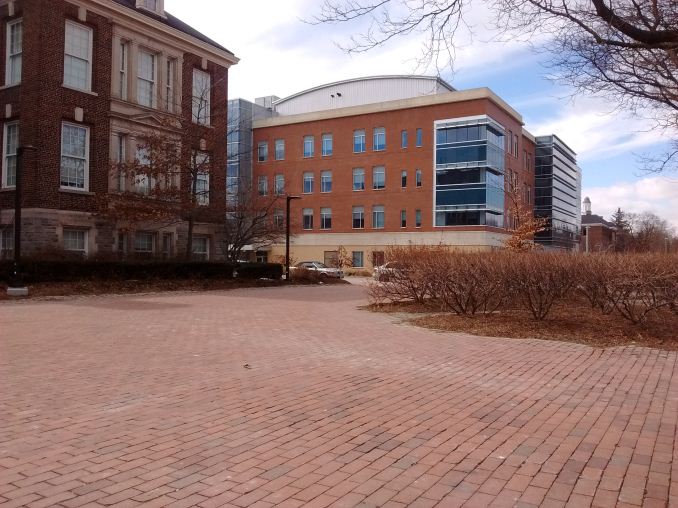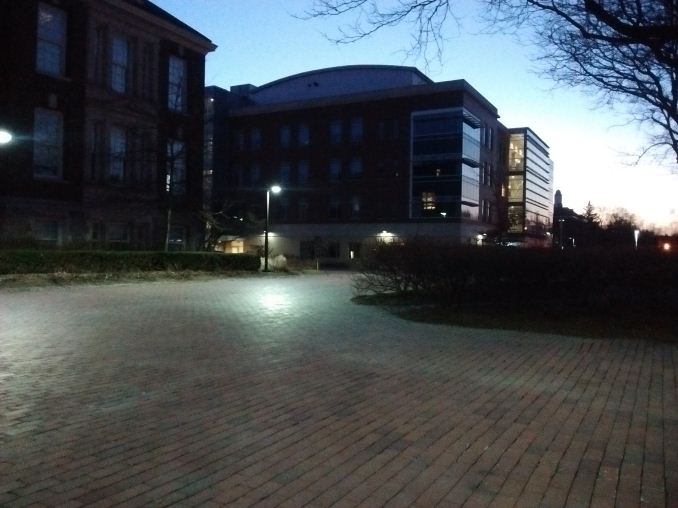The Moto E (2015) Review
by Brandon Chester on April 21, 2015 8:00 AM EST- Posted in
- Smartphones
- Motorola
- Mobile
- Moto E (2015)
Camera Performance
Examining a phone's camera on paper can only tell part of the story about its image quality. The camera's system of lenses and processing after the sensor captures an image have major impacts on the quality of photos. While I do wish we had a more consistent and objective test for comparing camera quality, there's still a great deal of information that can be found by comparing how different smartphone cameras resolve detail and handle noise reduction and sharpening.
Left: iPhone 6. Right: Moto E (2015)
While I normally begin with a test that has several objects in a white box with extremely generous lighting to get an idea of how the camera performs in the most optimal conditions, the Moto E presents an issue with that test. For whatever reason, Motorola's white balance algorithm goes berserk in the presence of the 3000K LED bulbs that I use for lighting. Users can rest assured that I never encountered this issue in any other situation, but it's still somewhat concerning. If nothing else, the Moto E's image quality in the photo above is very good apart from it being yellow.
The Moto E's camera performance in adequate lighting is actually better than I had expected. The tree in the upper right is well captured, and brick walls of the building on the left have a good level of detail. The low resolution limits the amount of detail in the bricks of the orange brick building, and the shrubs on the right side also end up becoming a bit of a mess. The colors of the photo also seem to be shifted slightly toward orange compared to what they actually looked like to me in real life. Overall though, the output is certainly acceptable for posting on Twitter or Facebook, or for sending to someone via MMS/IM. It's not the world's best camera, but it's good enough that I'm sure people will be glad Motorola included it.
Unfortunately the Moto E's sensor size ends up hurting it when it comes to low light situations. The photo has much more noise than any of the other smartphones compared, including the iPad Air 2 which has the same pixel size but on a larger 8MP sensor. It's impossible to see the brick texture on either building due to the noise, and the bricks on the ground that are more than a couple of feet away just end up blending together.
The Moto E is capable of 1280x720p30 video recording. Unfortunately the quality of those videos is nothing exceptional. There's just a general lack of detail to everything, even objects that are very close. Video is encoded with an average bitrate of 10Mbps and uses the H.264 High profile.
























90 Comments
View All Comments
Kristian Vättö - Tuesday, April 21, 2015 - link
Buying goods internationally is always more hassle. First off, there's customs fees that may increase the total cost quite significantly. On top of that there's always a concern regarding warranty because if the OEM has no presence in your country, you may have to ship it to another country that increases waiting time and may even cost you.erikiksaz - Tuesday, April 21, 2015 - link
I was under the impression that xiaomi phones don't have all the proper bands for T-mobile. Is this not true?hans_ober - Tuesday, April 21, 2015 - link
Any front camera samples?Did you try charging it using a Quick-Charge 2 charger; or even another normal charger with a high amp rating?
How good (or bad) is multitasking on the phone due to only 1GB RAM?
Brandon Chester - Tuesday, April 21, 2015 - link
The original release of Lollipop has some memory issues of its own, but I never felt like there were problems with multitasking due to the limited amount of memory. There's definitely more app reloading than on the Nexus 6 but it's not a big deal.hans_ober - Tuesday, April 21, 2015 - link
Thanks, aren't you guys gonna share front camera sample pics?It might not be great, but I was curious to see how good/bad it is.
piroroadkill - Tuesday, April 21, 2015 - link
It's funny that we're talking about a PHONE having "ONLY" 1GiB RAM, when I vividly remember that being a shit-hot amount of RAM for your desktop PC.That aside, I don't see Moto E as a hardcore multitasking phone anyway, it's just a decent phone with a reasonable set of specs for someone who isn't that hardcore of a smartphone user.
hans_ober - Tuesday, April 21, 2015 - link
Times change :) When it comes to PC's I think 4GB RAM is the minimum that should come with a new PC, anyone planning on multitasking needs more. When it comes to laptops like the Surface and MBP, they should be including 8GB atleast: the iGPU uses a portion and that reduces things even further.mkozakewich - Wednesday, April 22, 2015 - link
No, times have changed yet again. A PC should have 1 GB at the very least, with 4 GB being a good amount. Most of these kinds of computers have SSDs, which are a lot faster with their page files. You can swap without too much delay, so you don't actually need much RAM. I've been surprised at how well the 1GB Stream 7 performs, despite Windows 8 taking up about a gigabyte on boot.(If you use Chrome heavily, tack on an extra 2 GB. All those tabs really add up.)
hans_ober - Friday, April 24, 2015 - link
Don't page file read/writes have a negative impact on the life of SSD's?blzd - Thursday, April 23, 2015 - link
My desktop PC has never gone above 6 GB of RAM usage, that's while playing a Shadows of Mordor while streaming twitch and Spotify in the background.